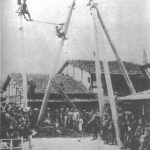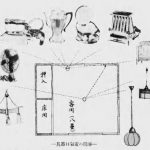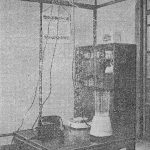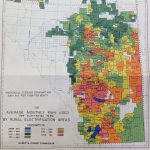Making Material and Cultural Connections: the fluid meaning of ‘Living Electrically’ in Japan and Canada 1920-1960
Abstract
https://dx.doi.org/10.15180/180904/001This article explores how material and cultural ‘connections’ to households were crucial in defining historical pathways of domestic electrification in Canada and Japan. Though relatively overlooked in the history of energy, we contend that the intricacies of household connections are important in understanding convergence and divergence in electrified ways of life. Electricity’s arrival in urban and rural homes was an uneven process in part due to geographical diversity and the variable connection policies of public or private providers. Selective insights from our two countries show that spatial irregularities in grid expansion and social inequities in the meaning of electrical service further arose out of misalignments between developers’ visions and the diverse material cultures of households. This disparity manifested in the form of disconnections between non-standard wiring and equipment, as well as in the form of consumer resistance, protests and even illicit acts as people fought to get the electrical service they desired. Instead of seeing electrification as a single, universal ideal around which all countries eventually converged, we conclude that it has always been an open-ended, negotiable and culturally fluid process.
Keywords
domestic life, electrical appliances, electrification, energy consumption, energy history, households, material culture
Introduction
https://dx.doi.org/10.15180/Electrification began to transform ways of life in the late nineteenth century and is taken for granted today by most households in developed countries. Although there has been broad convergence in electrified ways of life over time, national and regional differences in infrastructures and practices of electrical modernity have not been eradicated. To understand such divergence, this article explores the historical process of domestic electrification through a focus on how connections to households were made and modified. Getting connected to electricity was beset by material challenges. As observed by Schroeder, the small things really did matter to the success or failure of electrification, with key obstacles appearing in the form of wiring, plugs, sockets and appliances (Schroeder, 1986). Alongside material considerations came the issue of making electricity matter in the lives of those encountering it for the first time. Convincing people of the need to live electrically meant making a connection to existing cultures and customs.
The subject of domestic electrification has become a fertile ground for historians. Nye’s Electrifying America (1990) considered how electricity was promoted and how it permeated social life. Subsequent works by Jellison (1993), Tobey (1996) and Kline (2000) modified the progressive narrative of electrification by stressing the different timing of, and variegated reception to, electricity across urban and rural settings. In Domesticating Electricity (2008), Gooday argues that electrification was achieved through cultural manoeuvres that transformed the popular idea of electricity in relation to notions of danger, gender and future in order to make it more palatable to consumers who were unconvinced of the benefits of electrical living. Gooday’s triangular comparison of Britain, the United States and France concerned places where new electrical innovations directly stimulated technological domestication. Scholars have also drawn comparison to countries, such as Russia and India, where electricity arrived primarily via technological transfer (Coopersmith, 1992; Kale, 2014).
Our own countries of interest, Japan and Canada, have been often represented as ‘second-tier’ electrified countries, playing catch-up to Western Europe and the United States, when it came to connecting their populations to centralised systems. There is ample evidence to support this claim; in 1950, for instance, only fifty per cent of Canadian farms had power line service compared to eighty per cent in the United States (Sandwell, 2014). To take this as the end of the story, however, would be a mistake. On the one hand, regional variations in electrification policies and connection rates complicate any universal national picture. Moreover, if we follow Gooday’s call to suspend the assumption that electrification was historically inevitable, situating early electrified societies as the predictable future of a yet-to-be-electrified society anywhere in the world is problematic. Making such an assumption would superimpose a universalist discourse on to a distinctive geo-cultural context – an inapt comparative operation that Ravi Baghel calls ‘anatopism’ (Baghel, 2014).
Instead of dwelling upon the conventional comparison between early pioneers and latecomers, this article considers the intricacies of domestic electrification processes in Japan and Canada between 1920 and 1960. This was a period of intense experimentation and learning about the possibilities and limits of electrified life during which providers and consumers negotiated over the practical issues of how to string wires, how much voltage would be needed and how many outlets would be required to meet initial and future demands. There were additional social and cultural concerns to overcome: how would electricity fit with ‘normal’ practices, interrupt routines, or alter the overall experience of home life? Though relatively unexplored by energy historians we argue that the making of socio-technical connections at the ‘consumption junction’ (Cowan, 1987) were often as crucial to understanding the dynamics of domestic energy transition as more commonly addressed questions of how to expand supply networks or generate demand (Hughes, 1983; Nelles, 1974). Furthermore, these earlier concerns of how to enable people to live better electrically have relevance for today’s renewable energy transition, as nations grapple with the question of how to develop more sustainable electrified lives.
To be clear, the purpose of this article is not to provide a comprehensive historiography that systematically compares how domestic electrification unfolded in Canada and Japan. Selected evidence from different urban and rural settings within these countries is instead used as a means of exploring four thematic questions about the character of material and cultural connections to households: (i) How were domestic connections envisioned and made?; (ii) How completely were ideals of electrified life translated into everyday experiences of electrification?; (iii) How seamlessly did provider and consumer expectations of electrified lives align?; (iv) How did connections to the household converge or diverge as time progressed? Addressing these four elements enables us to reflect on the role of existing domestic arrangements in defining the uneven contours of electrical connections and their evolution. Before we turn to these central concerns we consider the wider developmental characteristics – resources, geography and politics – that have relevance for how electrical connections were made.
Reliance on hydropower is an obvious similarity. Both Canada and Japan were early developers of hydroelectric power (HEP) and it had a conspicuous and persistent presence in their energy histories. In 1914, the highest voltage transmission systems outside of the United States were operated by the Inawashiro Hydroelectric Power Company serving the Tokyo area and the Ontario Hydro Electric Power Commission (HEPC) Niagara Falls transmission system (Hausman et al, 2008). Both nations continued to rely heavily on this relatively cheap and renewable energy source. In 1939, 98 per cent of all electricity generated in Canada came from hydropower and ninety per cent still came from this source in 1960 (Evenden, 2015). In Japan, sixty per cent of electricity was hydro-generated across our study period (Samuels, 1987). Hydropower dependence is relevant to our story as it influenced spatial patterns of early grid extensions and, later, the ability to electrify the masses. In the early 1900s, households experiencing electrification first and with the lowest rates were those situated close to hydro generating stations, but the spatial reach of hydropower systems extended much further as higher voltage transmission became possible. Jones (2014) has observed that the combination of hydropower and long-distance transmission created an inequitable distribution of power, often to the detriment of those living close to the source of electricity generation. One way this inequity manifested itself in Canada was the relocation of First Nations communities to construct hydro mega-projects that delivered power to consumers in distant cities (Netherton, 2007). The presence of hydropower in the energy mix left other traces on societies through its influence on patterns of electrical connectivity, power costs and quality of service in both countries until the 1960s.
Geographical diversity, including variable population density and terrain, were other factors behind diverging electrical trajectories. Basic electricity services in Japan – a fairly small, if mountainous, island nation – spread earlier than in Canada, where the non-urban population was dispersed across a vast and geographically diverse territory that was technically difficult and uneconomic to service until increased state involvement from the late 1940s. Differential electrical penetration was also a politically defined process. Historians have often contrasted private and publicly led models of electrification (Nye, 1990; Nelles, 2003). In the former, electrification was a technologically and economically driven process where business interests pursued continuing supply expansion and demand growth. Private utilities generally cultivated domestic load when the construction of large generating capacity, chiefly for industrial users, created a significant valley of unutilised power during the off-peak period. Domestic demand was promoted to balance out load curves and reduce capital costs (Hughes, 1983). While private regimes often served more lucrative industrial and urban markets, a second model stressed the public service aspect of electricity with the potential to bring economic and social benefits to all users through state support of infrastructural development and subsidisation of costs. In Western Europe, where the public service model was prevalent, more than ninety per cent of the population already had access to electricity in the early 1930s and rural electrification progressed constantly (Hausman et al, 2008). In contrast, in America, where a private model dominated, ninety per cent of farmers still did not have electricity as late as 1935 (Nye, 2009), after which point the Rural Electrification Act (1936) accelerated connections to give most farmers power by 1950.
In the cases of Japan and Canada, we consider the influence of these dual public-private models, and their variants, on electrification progress primarily in relation to how these influenced expansion and connection policies. Japan’s early electrification was dominated by numerous small and large private companies until the late 1930s, when the state-run Japan Electric Generating and Transmission Company (Nippon Hassōden) took over most of the supply business providing electricity to regional distribution companies. The greatest strides in access to electricity were made before the arrival of nationalised public supply. Approximately 85 per cent of the country’s households had achieved electricity access by 1930 (Makino, 1992). The public supply industry was disbanded in 1951, when vertically divided regional electric power companies took over. Although both the nationalised provider and regional monopolies worked to iron out geographical unevenness in electricity connections, a number of ‘unlit’ villages without electricity access still existed in the late 1960s (Nishino, 2017).
The early history of electrification in Canada bore similarities to the model in the United States, with the emergence of a patchwork of isolated local grids and private, investor-owned, electricity systems utilizing hydro and other resources. Beyond this electrical development diverged in key ways from the American norm (Nelles, 2003). Most striking was the public ownership model that emerged in Ontario from 1905, where the HEPC built one of the largest hydroelectric generation systems in the world and promoted a policy of power for all at low cost. Elsewhere in Canada variable public-private ownership models characterised the pre-war period producing distinctive provincial electrification visions and histories (Nelles, 2003; Netherton, 2007). Alberta most closely followed an American-style market-based approach, while British Columbia and Quebec featured a lightly regulated private investor model. Though much has been written about how ownership models produced regional variation in the timing and relative scale of electrification – such as contrasting early to electrify Ontario with the lagging Prairie provinces – the finer details of how such models influenced domestic connections have been little explored. In part this reflects the complex patchwork of electrification arrangements that Nelles highlights; each province followed their own vision in terms of network expansion and the development of demand. While it is widely accepted that pre-war formative electric regimes perpetuated social unevenness in connections by focusing on urban consumers and leaving rural ones in the dark (Netherton, 2007), there were also significant regional differences in the extent of this inequality. Not all urban consumers had a similar quality of service and rural users in some provinces had much better connectivity than in others. Understanding these differences requires sensitivity to the nuances of provincial electrification policies and how they interfaced with local material cultures of energy.
Though hydropower, geography and politics were important to the timing and spatial distribution of electrification, our pivotal concern is how household connections were made, modified, aligned or misaligned, over time. Departing from a teleological perspective that posits the electrified future as a predestined course, our insights from Canada and Japan are used to highlight symmetries and asymmetries of connection that evolved over the course of the electrifying process. This approach raises interesting questions about the relevance of different domestic settings in modifying processes of electrification. By destabilising the notion of electrification as imposed on societies and presenting it as an uncertain and mutable process in history, which was adjusted through encounters with consumers, we invite further enquiries into the cultural fluidity of domestic energy transitions.
Connections did not progress evenly in our countries, making it difficult to adhere to a strict chronological order. Instead we organise the following sections thematically around intriguing aspects of material and cultural connections that differentially influenced the capacity of people to live electrically. We interpret connection here not only as the physical process of attaching consumers to a grid but in the sense that normalising electrified life was dependent on aligning technologies and domestic cultures. How material connections were made and what devices were brought into play to mediate consumers’ interactions with electricity systems is the focus of section 2. Section 3 considers the incongruence between developers’ visions of electrical life and the experience of electrification for households, which was partly defined by what voltage, appliances and equipment users actually obtained. Both cultural and material connections contributed to the making of electrified lives and to an evolving sense of normality in relation to everyday electricity use. In section 4 we reflect on the alignment of these dual connections in the pre-war period and on consumer and provider roles in defining or modifying them. In section 5, the central question is how the meaning of electrified life evolved materially and culturally after the Second World War, when it is often assumed that experiences of electrical living converged as systems, appliances and practices became more established and harmonised. On the contrary, we argue that the meaning and experience of electrified life remained culturally conditioned and materially diverse toward the end of our research period.
Wiring homes: making material connections
https://dx.doi.org/10.15180/180904/002If we look first to pre-war Japan, electrification could hardly be attributed to any strong national vision (Samuels, 1987). Although the government and private entrepreneurs shared the recognition that the country needed to exploit its hydropower potential, business interests with an eye to regional monopolisation of supply dictated hydropower development. The private sector played the predominant role in extending electricity service to the population. In 1934, 816 out of about 1,000 electricity supply undertakings were private companies (Kōei Denki Fukugen Undō-shi Henshū Iinkai, 1969). Outside of large cities, however, municipalities and local communities did act as important intermediaries in setting the level of electricity service due to their role in licensing utility companies, levying local taxes and enforcing safety regulations.
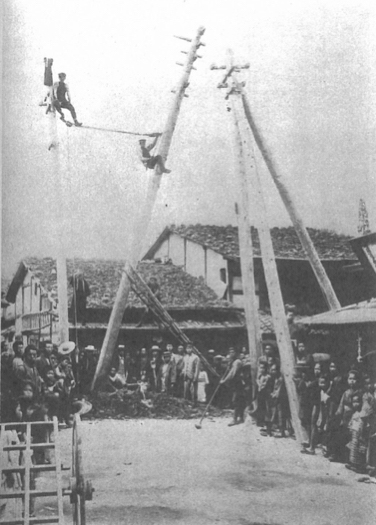
The electrification of rural communities was often mediated by local authorities through village meetings and town councils. For instance, when the town of Namegawa in Toyama was connected to the electricity supply in 1909, the town authority managed to keep the electricity price relatively low by negotiating the tariff with the local supplier Toyama Denki Company, based on the right to levy a tax on utility poles (Namegewa Shi, 1985) (see Figure 1). Elsewhere rural communities determined the supply company they wished to connect to and used collective bargaining to obtain advantageous tariffs. If they failed to reach an agreement with the supplier, local authorities could choose to establish their own supply by setting up a municipal supply company or forming an electricity utilisation association (Nishino, 2013). In 1937 there were 111 municipal and 240 communal suppliers providing power that was generally between ten and twenty per cent cheaper than private supply. These collective arrangements brought electricity to users even where there was little prospect of profit (Nishino, 2008).
Pre-war Japan provides an interesting example of how utilities exerted control over material connections to households. Under many contractual arrangements domestic infrastructure and appliances, including home wiring and lamps, were deemed properties of the supply company. Customers were prohibited from modifying domestic wiring or using appliances other than those provided by their supplier. Most utilities provided electric bulbs to their customers, who were required to go to companies’ service stations to get replacements when lamps burnt out. Some urban supply undertakings like the Toho Electric Power Company in Nagoya lifted such restrictions in the early 1920s in order to promote electric heating, but this was the exception rather than the rule.
Other elements of supply contracts hindered the material diversification of electricity use. Domestic wiring in the majority of Japanese houses was initially designed to provide lighting only. The fixed-price contract, applying to around eighty per cent of electricity users (Kajima, 2013), assumed lighting would be the sole use of electricity and was based on the number of lamps and wall outlets and not the actual amount of electricity consumed. To use additional appliances one had to pay for the installation of extra wiring, a meter and appliance hire (Matsushita Denki Seisakusho, 1933). Japan’s electricity grid added a further complication in distinguishing night-only lighting supply, used by most domestic users, from all-day supply that was mainly connected to factories and offices. A seemingly simple task, such as installing an electric heater, often meant upgrading the household supply connection and getting a new contract for all-day supply. As well as being a cumbersome process, customers who signed multiple contracts for different rates and services struggled to anticipate monthly utility bills.
Electrification came to Canadian households slowly and more unevenly than in Japan due to a variety of different regional visions and public-private interests that influenced how material connections were made. Much initial activity to establish connections was to serve the interests of industrial customers but some utilities saw the appeal of serving domestic markets early on, either to balance load or to achieve social betterment (Klingender, 1994; Sandwell, 2015). Early patterns of grid extension reflected uneven population density and variable demand, generally only reaching areas where a minimum level of energy consumption or customers per mile of line could be guaranteed. In areas where people had access to central service, electricity power usage was generally low in the pre-war years, but there was striking regional variation. In 1931 the national average monthly consumption was 93 kilowatt hours (KWh) per household, but this ranged from 30 KWh in Prince Edward Island to 300 KWh in Manitoba (Sandwell, 2014). Given these complex provincial power contexts, we focus here on two regions – Ontario and British Columbia – to contrast connection policies. Both provinces relied heavily on hydropower but grids were extended under divergent political regimes – one founded on public power, the other dominated by private interests.
Ontario’s formative hydropower regime developed around a vision of public power as a means to overthrow private ownership and reduce dependence on foreign coal supplies (Nelles, 1974). Within such visions there was also a sense of the revolutionary potential of electricity in the home as part of a perceived need for diversified demand to support cheap power for all. Sir Adam Beck, chair of the HEPC of Ontario stated that his task in electrifying the province was to provide power for all citizens – the poor, the housewife, the farmer and the merchant. The beginnings of Ontario’s provincial public power regime were laudable in terms of social ambition but relatively modest in terms of the actual expansion of grids, especially to rural users. Electrification was accomplished initially by connecting urban centres and communities near to generating stations with gradual rollout to other districts punctuated by economic depression, materials shortages and war. Preferential rates were offered to domestic consumers to facilitate expansion and to push out private utility interests, as in Toronto in 1911 where domestic lighting was offered at forty per cent less cost than by privately owned competitors (Klingender, 1994). Despite these efforts, in 1921 only half of Ontario homes had electric lighting and it was only in 1941 that electricity access was almost universal in urban homes, while only 37 per cent of rural homes had electric service at this time (Sandwell, 2015).
Ontario’s equalising narrative of cheap power for all was difficult to translate into homogenous connections on the ground, largely due to variable supply costs and the rural connection problem. The guiding principle of ‘power at cost’ meant that customers would pay only for the service they received, but in reality pricing policies were complex. In an attempt to provide some clarity, Beck explained in a 1923 address that electricity rates generally related to distance from source: Toronto, being ninety miles from the Niagara generating station, had residential service costs of 2.7 cents per KWh, while in Hamilton, fifty miles from Niagara, it was only 1.9 cents for residential service. In reality the equalising rhetoric of power at cost translated into the same rates throughout designated electric service zones, with charges apportioned in relation to economical distances from distribution centres in cities and towns. In the countryside the differentiation of technical connections and rates was defined in relation to rural power districts and specified classes of consumers. Information for customers in Ontario’s rural power districts published in 1935 described the variable technical requirements for new connections for no less than 14 service classes of rural customers: including hamlet, farm and light-only (HEPC Ontario, 1935). Small hamlet service offered a two-wire service to residences with 20-amp fusing that limited appliances to a total of 1,320 watts, while the small farm service allowed for a three-wire service with a capacity for 35-amps enabling the use of lighting and power for a small motor or a range. Despite Ontario Hydro’s equalising public service ethos, service connections and rates varied greatly for urban and rural users during the entire pre-war period and many customers struggled to understand the rationale behind this differentiation. Advocates for rural users, such as the United Farmers, criticised the utility’s pricing policies, asking why some farmers paid as much as three times that of Toronto’s power users and why some adjacent rural districts seemed to have widely divergent and seemingly arbitrary pricing policies (The Globe, 1926).
Statistics relating to quality of electrical service for Canadian households paint a disparate picture between different types of users. Ontario’s connected farm families tended to use less electricity on average than their urban counterparts in the pre-war period but many urban households continued to use electricity for lighting resisting the barrage of promotional literature about wider applications as a means to diversify demand and reduce rates. In Hamilton, for example, during 1921 the utility offered citizens the opportunity to install an electric stove and hot water heater plus necessary wiring for a maximum expenditure of $200 along with easy payment terms. Though many households responded to this offer, citizens also raised concerns about the ability of the hydro system to meet the extra load that thousands of new stoves would generate suggesting that people needed to be convinced of service reliability before they purchased appliances and re-wired homes (The Globe, 1921). Rural users also continued to have doubts about electricity’s necessity given that existing appliances run on wood or coal were functional and versatile, as well as being relatively cheap and convenient compared to installing wiring and buying appliances.
Unlike Ontario, early hydro development in British Columbia from the 1920s–1940s was characterised by the diverse priorities of private electric utilities. Two initial developmental ‘pockets’ of electrified space emerged in the first decade of the twentieth century due to the intersection of suitable waterpower sites and demand centres (Taylor, 1965). In the eastern parts of the province, servicing the Kootenay region, central station hydro serviced mining operations with residential demand a secondary service. In the south-western region, including the expanding urban centres of Vancouver and Victoria, the British Columbia Electric Railway Company (BCER) saw the future in the integration of the utility business with the synergistic development of transportation, light, heat and power operations. This integration of services under control of one organisation shaped extension policies. When the company extended electric railways it connected communities close to lines with lighting services, while places further away were deemed uneconomic to serve.
Securing a connection did not always translate into quality of service or high usage for those living along radial extensions. Low voltages and intermittent service were common complaints that limited what people could do with electricity. In 1930, for example, a group of residents living in Saanich, 23 km from the city of Victoria, wrote to the utility to complain that they were dissatisfied with their lighting service due to the voltage being so low that lamps could not draw the required candlepower (B.C. Electric, 1930). As a consequence, lights were often out from 11.30pm to 6.40am, rendering then all but useless. Numerous complaint letters indicate that such problems persisted throughout the pre-war period and that for many BC residents their first encounters with electricity did not meet even basic expectations. The householders in Saanich and other connected places had to wait until much later for a dependable service. It was only in 1945 that the BCER promised the construction of a new interconnected and dependable power system that would enable those on the Saanich peninsula ‘to buy all the service they wanted for a few pennies a day’ (B.C. Electric, 1945). Another promotional poster from the same year featured a labouring Reddy Kilowatt dragging all manner of new household appliances with the caption ‘They’re on the Way’.
When Canadian and Japanese homes were first electrified, applications were rudimentary, being restricted to simple lighting arrangements often with a single overhead socket. As other devices were brought into use the configuration of material interfaces became increasingly more complex and to some extent dictated the pace of social change by limiting which appliances could be attached. Overcoming such obstacles was also of importance to electricity developers, as appliances were perceived as the key to expanding modern ways of life.
Electrified visions and everyday life: making cultural connections
https://dx.doi.org/10.15180/180904/003Lighting, cooking, washing and heating could all be achieved electrically early in the twentieth century, but the conversion of modern ideals of electrified life into routine practice was a gradual process. The penetration of appliances was slow in 1930s Japan, despite the fact that around ninety per cent of the country’s households had already been wired. Even the most popular appliance, the electric iron, had reached only 21.9 per cent of the country’s households by 1937, while only 18.1 per cent had radios and a mere 0.08 per cent had refrigerators (Makino, 1992). This situation could not be explained solely by the price of electricity and appliances: the major technological roadblock to appliance diffusion was the type of supply connection. A 1940 market survey noted that the penetration of radios in rural Japan was held back by the prevalence of a night-only domestic supply because rural grids were built to supply just enough power for agricultural production during the day with little surplus capacity to send electricity to households. Only 1,493 of the 4,233 villages surveyed had daytime connections and consumers were reluctant to buy radios for evening use only (Osaka Denki Shimbun, 1940).
By 1941 only 69 per cent of Canada’s dwellings were fitted with electric lighting, with the majority of these homes in urban areas (Dominion Bureau of Statistics, 1941). Regional and intraregional variations were evident in figures for appliance penetration but the predominant national trend was for painstakingly slow uptake despite intense promotional efforts. In Ontario the saturation of electric ranges grew gradually from 13.8 per cent in 1924 to only 29 per cent in 1939 (Mickler, 1928; HEPC Ontario, 1939), but there was variation across urban districts. For example, in the Thunder Bay region of Ontario 46 per cent of domestic consumers were using electric ranges in 1938, a level attributed to the more concentrated population and greater sales effort in this area. For Ontario’s rural consumers appliance penetration rates were much lower at this point with electric ranges used by only 12.5 per cent of hamlet users and 17 per cent of farmers. Ontario Hydro speculated, in a 1939 survey, that the average consumption of the urban home at 1,980 kilowatt hours per year could easily be increased to 8,000–10,000 kilowatts annually indicating a perception of much unfulfilled load.
Though the uptake of electric ranges and other appliances was still limited in Canada in the early 1940s their lifestyle-transforming potential had long been portrayed by utilities. In 1910, Berlin was the first city to be connected to the Ontario Hydro power grid. To celebrate the arrival of this modernising energy source a civic celebration was held featuring food prepared using an array of electric appliances even though most homes were equipped only with circuits for electric lights at this time (Klingender, 1994). To overcome the mismatch between utility aspiration, infrastructure capacity and unfulfilled domestic load, the electric industry worked tirelessly during the 1920s to convince consumers of the benefits of living electrically through demonstrations and promotions. Another pressing need was to ensure homes were materially equipped and designed for electrical living. As in Japan a key impediment to wider electrification lay in the finer details of wiring and outlets. ‘What a house should contain electrically to make it modern’ was the subject of one newspaper article in 1923 that described the need to fit homes with special wiring that could accommodate an electric range and potentially allow for future addition of an electric grate and water heater (The Globe, 1923). A perceived impediment was the preference for homebuilders to keep immediate costs down rather than to speculate on the potential of an all-electric future. In some parts of Toronto special wiring was becoming a necessity not a choice – as certain streets were only served by electricity not gas. Several Canadian utilities were also involved with the promotion of Red Seal Homes that promised standardised connections, adequate wiring for large appliances and many convenience outlets and switches (Stadfeld, 2002; Gucciardo, 2011). By 1930, there were one million such homes in Toronto, Winnipeg and Vancouver combined, but all-electric housing was limited elsewhere. In the 1940s householders in British Columbia were still being encouraged to ‘Make Your Home All-Electric’ with the utility offering grants towards the wiring of homes to accommodate electric appliances, but again these campaigns had limited reach and appeal (B.C. Electric, 1940a,b).
The goal in promoting modern appliances was not simply to increase consumption of electricity but to increase its use at specific times of the day. The improvement of load factors was a means of creating resilience from natural fluctuations in hydropower generation, such as drought, and from social fluctuations in daily routines. As Stadfeld (2002) has noted ‘from B.C. Electric’s perspective appliances were sold to fill up valleys on the chart and, incidentally, to help Madam Vancouver do her housework quickly and easily’. The role of domestic appliances in improving load factor was also appreciated in Japan but electrification promoters were reluctant to develop domestic load due to natural resource constraints. Even though an increasing proportion of base load was provided by hydropower, peak demand could only be met by burning coal, of which the country had a limited domestic supply. When domestic consumers used electric cookers and heaters during the morning and evening peaks, electricity for these appliances had to be generated from coal. An energy expert Kennosuke Tsujimoto commented in 1923 that, considering the lack of sufficient domestic coal reserves in Japan, following the United States and Britain in the adoption of electric heating and cooking ‘would be a sure way to self-destruction of our country’ (Tsujimoto, 1923). Even though the country’s plentiful rainfall and mountainous geography would eventually bring cheap hydroelectricity to a wider population, electric heating and cooking remained a luxury for the wealthy until the 1940s (Monbu Shō Futsū Gakumu Kyoku, 1923).
Japan’s electrification promoters, such as the Domestic Electricity Promotion Association (DEPA) generally shied away from discussing the inequitable nature of the country’s electrification process stressing instead its role in national cultural progress. For Shimpei Goto, a former mayor of Tokyo and the first president of DEPA, the slow penetration of electrical appliances nationwide was due to cultural factors, especially ‘the strong attachment of the people to the familiar old ways’ (Goto, 1928). Established in 1924, the DEPA organised major exhibitions, such as the Domestic Electrification Exhibition (1927), and hosted public lectures in major cities. The DEPA’s Katei no Denki (Domestic Electricity) magazine had a national circulation ensuring the wide diffusion of ideas and images of electrified life (Ito, 2008). Exploiting the vocabulary of the contemporary ‘culture life’ movement, which was designed to rationalise Japanese life by revising traditional customs and selectively adopting elements of a western lifestyle, the DEPA’s promotions aimed to selectively incorporate electricity into a new way of living (Sand, 2003). Pre-existing housing style was crucial to this process. Energy experts stated that electric heating was not suited to the open design of traditional houses due to a significant waste of heat. The electric heater was appropriate when installed in newly built western-style houses but in traditional homes it made more sense to use the kotatsu heater, which was based on the principle of ‘person heating’ as opposed to space heating (Fukkō Kyoku, 1920). Electricity was not expected to evenly transform the lifestyle of the entire population. The bread toaster, for instance, was for purchase by wealthy households with western tastes, while the shichirin cooking stove had greater appeal to Japanese consumers with modest means. The idea of electric life in pre-war Japan was doubly constrained by the limited availability of domestic energy resources and the conservative adoption of a western lifestyle.
Electrification involved making both material and cultural connections, neither of which proceeded smoothly. Ideas and visions of providers and users regarding what electrified life should mean and what it should cost diverged. Technical connectors limited visions in pragmatic ways and the promotion of electrified lifestyles often overlooked the diversity of living arrangements and cultural norms. In the next section we consider how well or poorly aligned these connections were.
Living an electrical life: contested normality
https://dx.doi.org/10.15180/180904/004Gaps between ideal visions of normal electrical life and the domestic capacity to live it created tensions that spilled over into different forms of protest and resistance. The case of DEPA in Japan offers an interesting insight into how promoters’ visions of an electrified life were mismatched with the financial and technical capacities of households resulting in frustration. The DEPA’s 1929 publication Sumiyoi Ie (‘a comfortable house’) set out standard specifications for the ideal number of lamps, switches and sockets in an electrified house (Katei Denki Fukyū Kai, 1929). Following these specifications, fifteen model houses – intended as electric homes for ‘the masses’ – were built in Tokyo, which were equipped with 9–20 lamps, 9–20 wall switches and 5–10 wall outlets. These houses were filled with what the DEPA’s promoters thought essential for modern living – including electric lamps, heaters, cookers, irons, vacuum cleaners, electric fans and the refrigerator (see Figure 3). The lifestyles being promoted by DEPA, which were well beyond the financial means of average income consumers, were also out of sync with the technical capacities of the targeted households. Many of the electricity users who participated in an essay competition held by the Matsushita Electric Company in 1933 thought the problem had less to do with their financial capability than with the prevalent home wiring arrangements. An essay written by a consumer in Yamaguchi, among 110 papers making a similar point, complained that ‘when one wants to use a radio, an iron and a cooker, one has to ask the company to connect three supply cables… With such a supply arrangement, how can electrical appliances become popular?’ (Matsushita Denki Seisakusho, 1933).
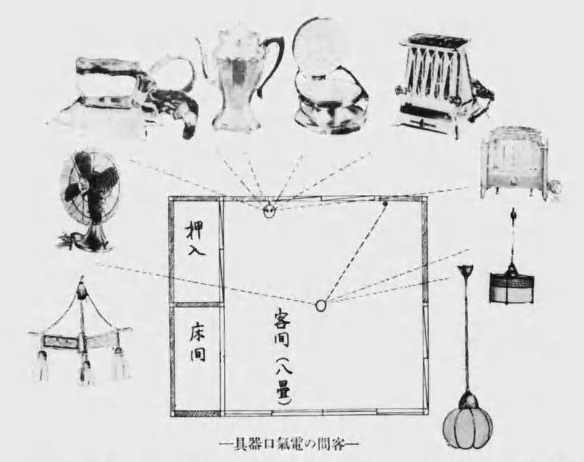
There were also stark differences between providers and users in terms of understanding what constituted a normal electrical service and reasonable cost. Consumers were especially vocal about tariff differentiation. In 1927, the Toyama Electric Power Company’s tariff increase provoked fierce consumer protests, originating in the town of Namegawa. Protesters removed utility-owned electric bulbs from their houses and dumped them at the company’s office, as a daring statement against pricing policies (Namegawa Shi, 1985). In this ‘electric lamp abolishment’ movement, towns and villages stopped using electric lamps and reverted to candles and oil lamps. The Namegawa protest incited around four hundred similar protests across the country and resulted in a reduction in electricity rates. The tariff issue was particularly contentious in Toyama, as the region had a number of hydropower plants that were connected to long-distance transmission lines. The Namegawa protesters asked why they, though living close to the source of electricity generation, were paying 0.70 yen per month for a 16-candlepower lamp when consumers in Tokyo, far away from the source of electricity, were paying only 0.60 yen per month (Abe, 1928).
Differential electricity rates and tariff policies across Canadian provinces were also an on-going cause of strife between utilities, municipalities and customers, with pricing policies considered incomprehensible to the average citizen (Sandwell, 2015). Ontario hydro customers could not initially fathom why they had to use more energy to reduce the unit cost or why they had to pay a fixed amount for system overheads as well as a variable fee for the actual amount of electricity they used (Fleming, 1992; Sandwell, 2015). Rate disputes also surfaced in political campaigns against privately controlled utilities. In Victoria, British Columbia, citizens were compelled to fight for public ownership and fairer tariffs in the 1930s by municipalities that urged voters to follow the example of Ontario and embrace public power. This dispute was also reflected in consumer complaint letters to the BCER, as in the case of a Victoria resident who could not comprehend why his friend, living only a short distance away in Vancouver, received such a low rate given similar electrical equipment and usage: ‘I notice my bill last month was $11.40, and he apparently got off with $5.50’ (Forman, 1930). Rate disputes highlighted spatial variability in what having an electrical connection meant at a cross-regional and local scale.
The complexity of electricity pricing policies not only perplexed Canadian consumers, it also served indirectly to curb electrical expansion. In rural areas, due to the expense of reading meters, many utilities initially relied on a flat rate for a minimum amount of power and most customers refused to exceed this minimum level (Sandwell, 2015). Elsewhere consumers questioned the logic of connection and pricing policies. In a letter to The Globe newspaper in 1935, a customer living in suburban Toronto puzzled over why his family had to pay more in their municipality than in the city itself, and questioned the justice of an additional service charge for having a third wire service attached to the house. This, he suggested, served to discourage consumption as his wife had been compelled to cut down on her hydropower use rather than pay the extra charge for additional capacity. Now she did most of her cooking on a coal range, especially in the winter months, and to further curtail hydro use had installed a small coal heater to warm water as well as changing all the lights to 25-watt bulbs (The Globe, 1935).

Another form of protest was a growing rate of illicit electricity use in Japan. This problem was not a response to a lack of electricity access, given that most households were wired by the 1930s. It emerged instead from a mismatch between consumers’ desire to live in a certain way – partly inspired by successful advertising campaigns that profiled all the latest appliances – and the material limits that people faced in limited household infrastructure. In the 1930s, the price of small electrical appliances like electric irons and electric fans fell steadily due to the growth of the manufacturing industry, while domestic wiring in most houses remained as rudimentary as a few ceiling lamp sockets. A device that enabled users to get around the lack of service outlets was the two-way socket, which allowed users to connect additional appliances to ceiling sockets without losing electric light (see Figure 4). Annually, two to three million sockets were sold to supplement inadequate wiring as consumer desire for appliances increased. Most utility companies prohibited the use of such devices as it resulted in greater electricity consumption while customers were still charged for only one lamp or socket. Similarly, customers ignored restrictions on the type of lamps they were allowed to use by plugging in electric bulbs brighter than those provided by the company to compensate for low supply voltage. The utilities responded to illicit use by declaring that the breach of contract terms amounted to electricity theft. The supply companies tried to tighten their grip on consumers’ behaviour by conducting regular patrols, which usually involved entering homes to inspect wiring and appliances (Hourai, 1927). A moral argument was made linking illicit electricity use to the allegedly uncivilised state of Japanese consumers. The editor of Denki Keizai Jiron magazine argued that the process of electrification ought to be accompanied by a campaign to implant the idea in the public mind that illicit use was a sinful crime (Mugai, 1933).
Illicit use appears to have been a relatively minor problem in Canada in this period compared to Japan and to utilities in Britain and the United States that reportedly faced problems of widespread electricity theft (Yopp, 1935). However, concerns about problematic customer practices were raised in earlier decades. Fleming (1992) describes a growing problem in Ontario during 1916 where farmers would sign up for the minimum flat rate, allowing usage within a pre-arranged limit, but then add more equipment and load until transformers burnt out. These overloads were not only an expensive annoyance for the Ontario HEPC, they were seen as a destructive practice that contravened the non-formalised code of honour between public providers and users (Fleming, 1992). The utility’s solution was to more closely regulate rural users and to impose a differential rate system for varying classes of power users; lighting, light power and heavy power. The imposition of such a system may have helped to realign customer practices to the capacities of the grid but rural users continued to debate the relative merits of fixed and flexible rates and how different user classes were to be fairly charged for many years (The Globe, 1926; The Globe and Mail, 1942).
After the Second World War: electrical life still in flux
https://dx.doi.org/10.15180/180904/005The misalignment of visions and everyday experience was not something that was exclusively associated with the early phase of electrification. These issues resurfaced repeatedly in the post-war period. In Canada, a variable and fluctuating landscape of electrification continued to drive efforts to more fully electrify urban households and rural communities. By 1948, although close to 95 per cent of homes on Ontario, Quebec and British Columbia were electrified, only 63 per cent of homes in Alberta had electrical service and a higher proportion of these homes were self-serviced via home generation (Dominion Bureau of Statistics, 1948). It was also in this post-war period that many provinces, other than Ontario, pursued a public ownership approach as the role of the state in ensuring economic and social betterment was increasingly recognised. The culmination was what Nelles has referred to as a ‘provincial nationalization’ of utilities that acted as a prelude to massive frontier projects in hydroelectric power and expanded rural electrification and load development in provinces such as Quebec and British Columbia (Nelles, 2003). As the cost of appliances, rather than electricity per se, had become a key impediment to the continued electrification of society (Netherton, 2007), this push for electrical expansion also involved subsidising the cost of appliances and offering them on extended payment terms.
In British Columbia, the utility’s Hydro Home Service Centre was the focus of intensified efforts to expand its rural customer base and to make electricity work harder for its existing consumers. The centre’s promotional materials in the 1950s–60s show how the company prioritised different domestic uses for load development purposes, and what they believed households might value the most. A 1958 survey found that the appliance most women tended to purchase first was a radio as this provided entertainment for the whole family (B.C. Hydro, 1959). Second on the priority list was a washing machine, which supported an intensified focus on laundering practices as a means of developing domestic load. In pursuit of this objective the company set out to promote the four key appliances required to attend to the needs of modern laundering: a washing machine, a water heater, a dryer and an iron. Household desire for such modern laundering equipment was explained in the context of specific local conditions: ‘because of our rainy season and sooty atmosphere, especially after the furnaces are on in the fall, drying clothes becomes quite a problem’ (B.C. Hydro, 1959). A new way of laundering was to be ‘connected’ to local consumers by selling them a solution to the vagaries of the West Coast climate. Establishing cultural connections to new laundering methods also required adjusting material ones. Electrical dryers would require a vent and ‘special wiring’ that operated on 230-volt electrical lines if drying time was to greatly improve; the older 115-volt lines would unlikely be up to the job. For electric water heaters and washers a constraint was whether the house was wired with ample capacity for the extra kilowatt-hours to be consumed. There followed a list of other considerations in buying the hardware of washing, including the size of the home and the number of inhabitants.
Behind the statistics showing almost universal connection to grids lay material limits and multiple social arrangements that differentially shaped the experience of living electrically. As domestic energy historians have elsewhere noted it was such complex material and cultural interfaces at the ‘consumption junction’ that defined how households made choices between competing technologies (Cowan, 1987). In the specific case of the automatic washer, Parr (1997) suggests that post-war spatial diffusion also depended on availability of indoor plumbing, consistent running water and, in the context of income limitations, on priorities – such as whether to first purchase an electric stove, refrigerator or radio. Such factors helped to explain why automatic washers were adopted early in some provinces but not in others. For example, in Quebec, where 63 per cent of farms had running water, by 1951 automatics were a popular choice early on, while they were less favoured in Ontario and the Prairies, where only forty per cent and nine per cent of farms respectively had a reliable supply of running water (Parr, 1997).
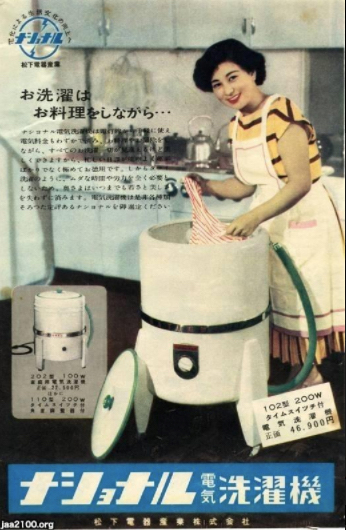
In Japan, the electric washing machine was seen as one of the so-called three sacred treasures – the others being the television and refrigerator – to be widely adopted in the late 1950s. The transition from manual to machine laundering was accelerated by the country’s adoption of mass-produced western clothes after the war (Suzuki, 2013). Widespread adoption of electric washing machines was facilitated by an expanding appliance industry, including companies like Sanyo and Matsushita that emphasised the benefits of new machines in enabling Japanese housewives to multi-task (see Figure 5). As an additional benefit manufacturers pointed out that the electric washer would eliminate the hardship of handling icy cold water to wash clothes during winter, as was the common practice (Suzuki, 2013). Spearheaded by the washing machine, Japan’s post-war electrification progressed rapidly. By 1960, more than fifty per cent of the country’s households owned washing machines, 45 per cent had black and white TVs and nearly twenty per cent had refrigerators (Nihon Enerugī Keizai Kenkyūjyo, 1996).
Another technical device that played a crucial role in the post-war electrification boom in Japan was the electricity meter. As Ackrich has observed (1992), meters do more than measure kilowatts, they also define a relationship between utilities and users by embodying a supply obligation on the one hand and a contracted responsibility to pay for the service on the other. The wide-scale introduction of the meter in the late 1940s transformed the way electricity consumption was monitored in Japan. In the immediate post-war period, chiefly in response to a surge in the rate of illicit use, the country’s utilities made a significant investment in installing meters. The cumulative number of installed meters increased from four million in 1945 to nearly ten million in 1952 (Teishin Shō Jigyōkyoku, 1945–1952). With the transfer of customers from fixed-price to metered rates in the 1950s, Japan’s utilities gradually withdrew from domestic space. Domestic wiring became the property of homeowners and the meter, which was still owned by the suppliers, was normally installed outside the house. The meter effectively became a ‘gatekeeper’ device that demarcated domestic from public space and consequently redefined the responsibility of utilities and consumers (Marvin et al, 2010). While utilities no longer prohibited the use of additional appliances, domestic users were now held responsible for upgrading domestic wiring when the pre-existing infrastructure became insufficient to cope with the increased load. Users themselves had to plan and pay for adequate home wiring and extra outlets in their homes, taking into consideration both their immediate and anticipated future needs.
In Canada electricity meters were already commonplace in the 1940s and people were generally used to paying for what they consumed rather than paying a fixed price for electricity. Earlier concerns appear to have centred on the unpredictability of metered use for monthly billing cycles compared to a pre-arranged flat rate (Fleming, 1992). In addition, while monitoring illicit use may not have been a priority for utilities, citizens routinely complained about the accuracy of meters and many demanded independent testing, being convinced they could not be using as much electricity as they were being billed for (The Globe, 1935).
The problem of mismatched technical connections re-emerged during Japan’s post-war electrification boom. In spite of the Adequate Wiring Programme, which was initiated in 1958 by the utilities and semi-official Electricity Safety Committee, rewiring Japanese homes progressed only slowly (Horii, 1960). The lack of sufficient wall outlets was a perennial source of complaint by the residents of modern apartment blocks. In a 1954 survey of apartment blocks in Tokyo, residents grumbled about the lack of service sockets for washing machines (Jūtaku Kenkyūjyo Iinkai, 1954). The connection problem was worse in traditional style houses – a decade later, in 1967, more than 25 per cent of houses in Tokyo had fewer than two electric outlets, and 4.2 per cent had none, explaining why electricity users of this period had to resort to ‘octopus wiring’ (Nihon Denki Kōgyō Kai, 1967) (see Figure 6). Furthermore, about 173,000 households in the country still did not have access to electricity in 1959, primarily in the northern region of Hokkaido.
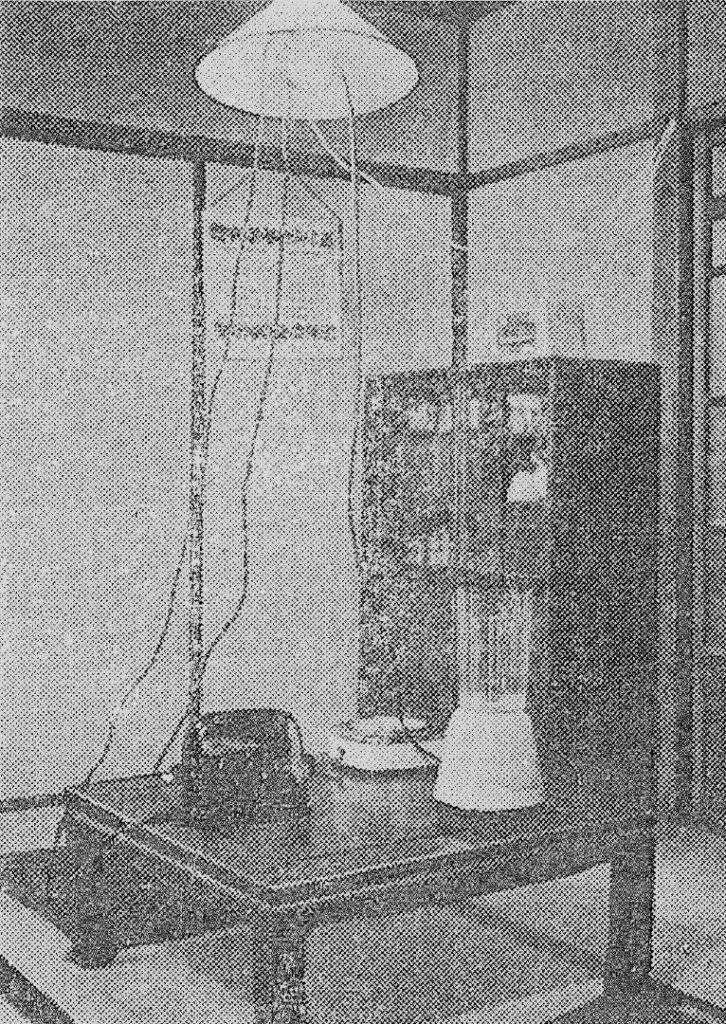
The regional service disparity was even more pronounced in Canada where the glacial pace of rural change, compared to the speed of urban electrification, has been noted by social historians (Gucciardo, 2011; Sandwell, 2015). After the war, most provincial governments promised comprehensive schemes to bring electricity to the farmer. In British Columbia electrification visions shifted from serving primarily the more lucrative areas of demand in the pre-war period towards an expansionary logic of serving the largest number of people at the lowest cost, particularly from 1945 when the BC Power Commission was formed as a public-sector enterprise to extend electrification in rural or isolated areas.
In Alberta the initiation of rural power proceeded even more slowly and more closely followed the approach adopted earlier in the United States by delegating responsibility to communities for making connections. After much deliberation about whether rural electrification should proceed under public or private ownership, in the late 1940s Albertans voted marginally in favour of a private ownership model (Dolphin and Dolphin, 1994). Under this system, farmers were encouraged to form cooperatives or Rural Electrification Associations (REAs) and applied directly to the Alberta Power Commission for subsidies to obtain central station electricity and for funding assistance for line construction. Each member of the REA paid an equal share toward the capital costs of farm electrification. Utility companies built the lines and employed local electrical workers to install equipment up to the farm gate. Farm Electric Service Ltd (FES), a non-profit subsidiary of Calgary Power, provided assistance to REAs and set out power supply conditions. From there, responsibility lay with rural users to connect buildings in accordance with Alberta wiring standards. This cooperative self-help approach appears to have had remarkable success in a short time period in terms of material connections: over ninety per cent of Alberta farms were reportedly electrified within a decade (Alberta Power Commission, 1965). However, the experience of electrification was still greatly variable at this point. A map published in 1965 by the Alberta Power Commission showed individual REA areas distinguished by the average monthly KWh usage per farm, with a vivid array of colours depicting significant variations in electricity usage between different areas.
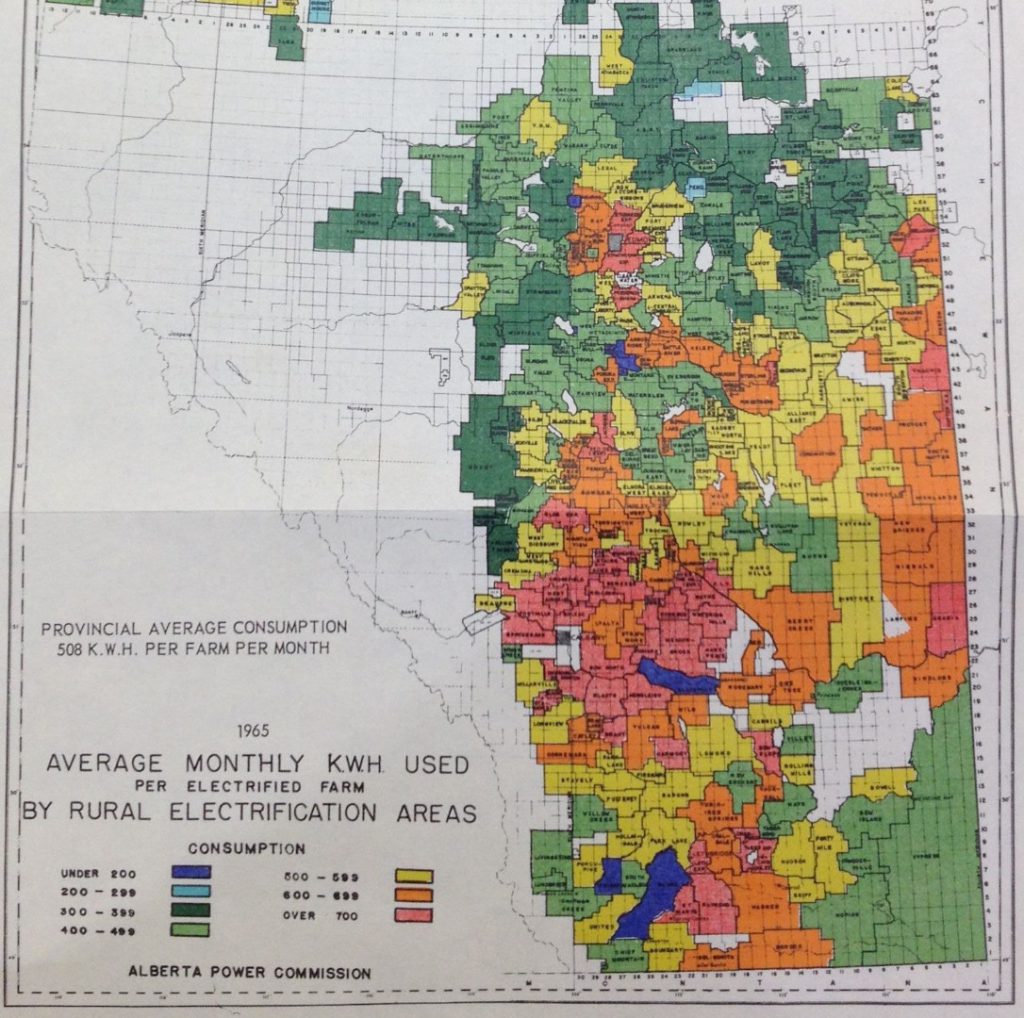
The REAs’ impressive connection figures also obscured the laborious efforts of its members in mediating new power arrangements. The evolution of rural electrification in Alberta involved enlisting communities to help make connections and teaching people how to live with electricity. As in Japan in earlier decades, it involved policing of illicit activity and misuse, including attempts to stop farmers climbing utility poles to make DIY repairs, monitoring of illegal connections and educating the neighbourhood children not to shoot at the glass insulators on the line (Government of Alberta, 1970). In the case of the Albertan REAs, connecting rural homes to electricity grids was not only a matter of visualising electrified ways of life on the farm; it involved making technical connections and the mediation of new social relations to energy.
Taken together, our selected cases from Japan and Canada in the post-war period show that electrical life was becoming more normal but was still in flux at the start of the 1960s. At this point electricity had touched the lives of the majority of households in these two nations but experiences of electrified life were to some extent still diverging. National and regional variations in how people lived electrically were certainly not eradicated by progress in universal access to electricity grids. In late 1950s Japan, where more than 98 per cent of households were wired, the impact of the economic divide in electricity consumption emerged as a major problem. In Hikari city in Yamaguchi in 1955, the majority of average income households had five to six electric lamps and a radio, while more than sixty per cent of the households receiving social benefits had one or two lamps and only ten per cent had a radio (Yamaguchi Ken Tōkei Ka, 1956). Poverty in urban areas was now creating a different sort of electrical life for this economically disadvantaged population. In Canada too there was divergence in the experience of living electrically. Even in Ontario, where Beck’s promise to lighten the load of all had defined the pioneering public electrification approach there were still some pockets of non-electrified existence – as noted by a disgruntled resident of remote rural Muskoka who was ‘still waiting for the hydro to arrive’ in the mid-1960s (Turnbull, 1965).
Conclusion
https://dx.doi.org/10.15180/180904/006Exploring Japanese and Canadian households’ reliance on electricity in a period of great change shows us that there has never been a single, universal idea of electrified life. What existed, and continues to exist today, are numerous ideas and experiences of electricity use that are allied to variable connection policies, domestic cultures and the material configuration of homes. In terms of the influence of politics on connection policies, Japan’s early electrification featured a business-led model with a high electrification rate and high level of intervention in the realm of the household but this was countered by stories of consumer resistance through illicit use. Canada’s connection processes have been convoluted due to provincially defined electrification pathways. Ontario’s public power model only gradually achieved its goal of power for all, while in British Columbia the integrated vision of urban and suburban expansion under a private monopolistic utility jarred with the divisive politics of service unevenness, as citizens and municipalities advocated for lower rates, better service and fairer contract terms. Relatively early rural electrification in Japan was assisted by communal initiatives but it left some ‘unlit villages’, where locals did not have sufficient power to negotiate with private providers. Rural electrification came late to the Canadian province of Alberta and the model of extension favoured collective action by rural households rather than state involvement. These different models of network extension were among many complex socio-technical elements that gave a distinctive flavour to the material evolution of rural and urban connections and contributed to the nuanced meaning of living electrically across space and time.
Household connections have been the focus of only a handful of historical studies and we contend that there is more to learn about the cultural fluidity of energy transitions through an empirical focus at the interface of domestic practices, material infrastructures and wider systems of energy provision. The selective insights from this article are to be taken both as a scoping exercise and as an invitation to further explore the intricacies of spatially divergent connection processes for what they might reveal about on-going energy modernisation processes. As in the past, electrification today is evolving through many intersecting hybrid arrangements – including uneven reliance on renewables, multiple public and private visions, convoluted service contracts, fitting and retrofitting of smarter equipment, mixes of centralised and distributed grids, and variable lifestyles and cultural dependencies. This transformation of electrified life needs to be seen as an open-ended, interactive and fluid process rather than a progression to a common end goal that is unlikely ever to be reached.
Authors’ note: This paper draws on research findings from the ‘Material Cultures of Energy: Transitions, Disruption and Everyday Life in the Twentieth Century’ project (UK AHRC, AH/K006088/1).




